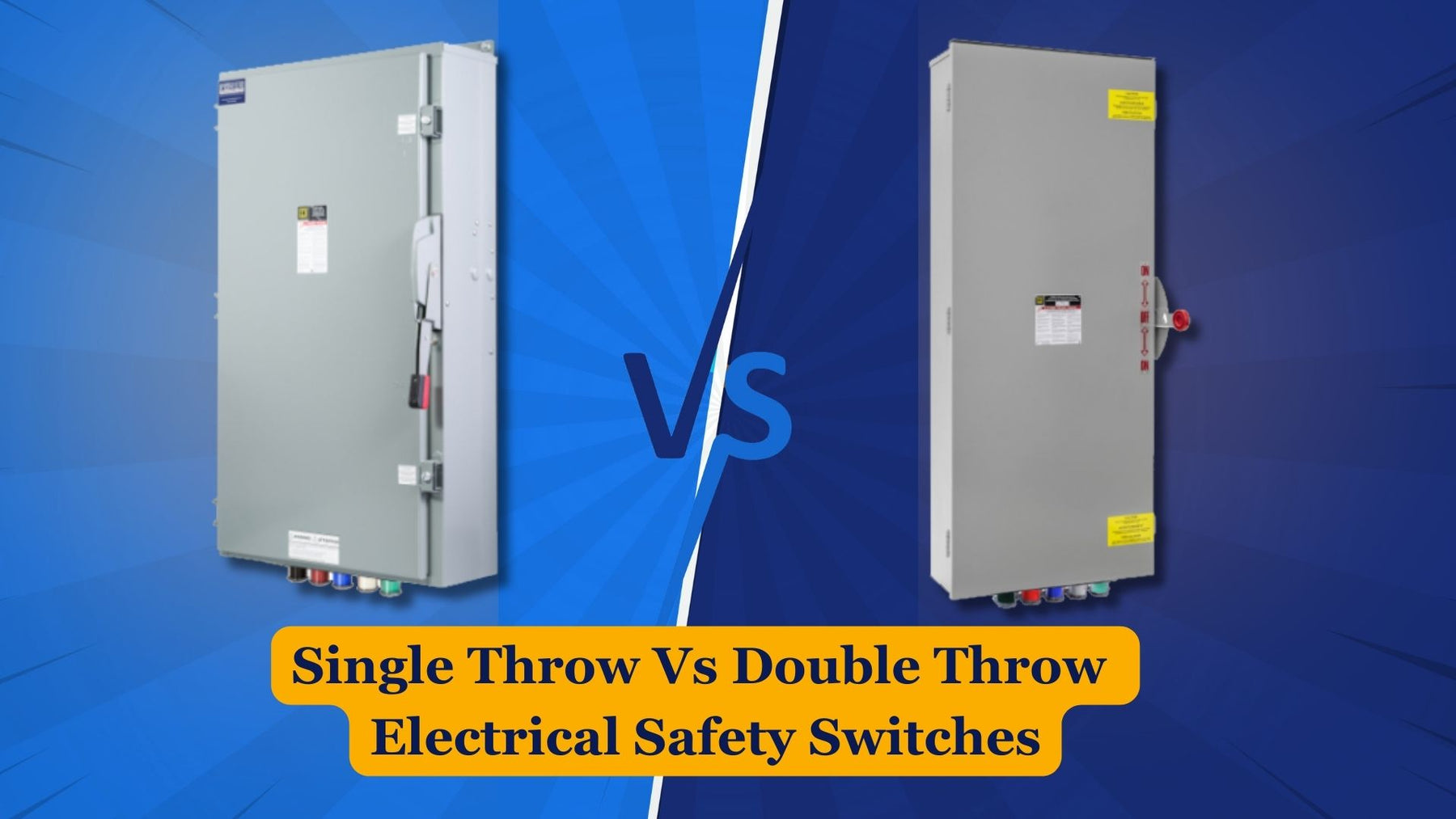
Single Throw Vs Double Throw Electrical Safety Switches
If you work closely with electricity and portable power equipment, electrical safety switches are crucial for keeping you and your team safe. A disconnect is a power distribution unit used to instantly de-energize circuits in the event of an emergency, repairs, and routine maintenance. Both our single and double throw Camlock Connection Switches (CCS) are an affordable and easy to implement option that provides you with on/off switching capabilities to protect you and your team.
There’s no question that the presence of a safety switch can be the difference between life and death. These days, camlock disconnects can be found in pretty much any setting that requires a large amount of power. For instance, our customers enjoy using our disconnects with cams to keep attendees safe at concerts, employees out of harm’s way in factory settings, and protect workers on construction sites. Since our CCS is ideal for preventing electrical hazards before they snowball into bigger problems, its applications are endless! In this article, our team of experts will explore the difference between a single and double throw Camlock Disconnect Switch, all our standard variations, and which one might be right for you!
Single Throw Electrical Safety Switch
A single throw electrical safety switch is designed to operate with a single power source. By this, we mean that it has only one input (line) and one output (load). When your CCS is flipped to the “on” position, electricity flows freely through the disconnect switch so as not to disrupt the circuit that it is connected to. However, you can close the circuit that your safety switch is connected to and stop the flow of electricity at any time by flipping the lever into its “off” position.
Single throw disconnects are an excellent choice for situations where you need to connect and disconnect a single power source to a load. For example, you can use a single throw variation to isolate power to specific machinery, as an emergency stop, or to disconnect power in electrical systems. Since single throws often include fewer moving parts, they tend to be a bit more simple to operate and a bit less expensive than double throw variations.

Double Throw Electrical Safety Switch
Unlike the simple single throw, a double throw electrical safety switch can connect with multiple sources and draw power from either one. That is, on top of being able to turn your utility power source on and off, it can switch your home or business to run off an alternative power source (think generator power).
However, it’s important to note that a double throw CCS cannot draw power from both sources at the same time. When switching from one power source to another, our CCS is designed to completely close access to the adjacent circuit. This is designed to prevent backfeeding into utility lines. When backfeeding occurs, it can flood the power source with too much electricity. This can lead to shocks, arcing, and other dangerous conditions.
Since double throw disconnects can close circuits and switch between two power sources, it provides you with plenty of flexible power management. A double throw is ideal for situations where you would like to be able to manually switch your system to a backup power source. This continuity can help you to ensure that your project stays powered so that you can avoid downtime.

Exploring ATI's Quick Connect Switch (QCS), A CCS Alternative
While our Camlock Connection Switch is quite literally a life saver, our team recognizes that time is of the essence when it comes to meeting your project’s deadline. In order to help you beat the clock, we now offer the Quick Connect Switch in a wide range of standard configurations! Our QCS offers you the same amazing on/off switching capabilities as our CCS with an incredibly low 0-4 week lead time. With just a quick turn of its front rotary handle, its built-in ABB switching mechanism can instantly open or close circuits to keep you and your team safe.
To step up the safety game, the QCS features a lockable door that is designed to never open while circuits are live. This way, you can bypass accidental exposure to live wires that could turn a routine application into a hazardous situation. This affordable disconnect is available in a single throw, wall-mountable design with a quick-connect Series 16 camlock system to make installation a piece of cake. Take your pick of fused or non-fused, (3) neutral variations, 100A to 1200A configurations, cams wired to load or line, and your choice of 120/208V, 120/240V, 120V, 208V, 277/480V, and 480V ratings to select your customized QCS.


 CALL OR TEXT NOW 800-597-9311
CALL OR TEXT NOW 800-597-9311
Leave a comment